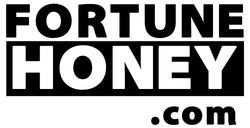Half of the honey imported into the European Union, is suspected of being adulterated with sugar syrups, according to an investigation by European officials published on Thursday.
The research, spearheaded by the European Commission’s Anti-Fraud Office (OLAF) and the Joint Research Centre (JRC), revealed that 46% of the 320 samples of imported honey – taken randomly between November, 2021, and February, 2022 —are part of a massive fraud.
According to the sampling and monitoring work carried out by the Brussels-based body, almost 50% of the honey from non-European countries is cut with sugar syrups made from rice, wheat or sugar beet.
China and Turkey, main honey fakers
Any addition to honey is prohibited by European regulations. With 46% of the samples analyzed being fraudulent, it is safe to say that a significant proportion of the honey consumed in Europe is fake.
“With 175,000 tons of honey imported per year, the Old Continent is the world's second-largest importer of honey after the United States,” writes Le Monde.
Most fake honey is brought from China (74%) and Turkey (14 out of 15). All the 10 honeys entered via the United Kingdom were marked “non-compliant” and mixed with imports from Mexico, Ukraine and Brazil.
“A large part of the honey imported from non-E.U. countries and found suspicious by the JRC of being adulterated remains present and undetected on the E.U. market,” the study found.
The report has confirmed suspicions of consumer groups and Europe’s homegrown beekeepers who have found themselves competing with the influx of low-priced imported honey.
Europe: a sieve for false honey
Considering the number of fraudulent cases, the consumers’ association Foodwatch has described the European market as “a real sieve.”
“Of 123 honey exporters to Europe, 70 are suspected of having adulterated their products, and out of 95 European importers checked, two-thirds are affected by at least one suspect batch,” writes L’Essentiel.
To date, “44 operators in the E.U. have been investigated and seven have been sanctioned,” alerts Olaf. Of the 21 samples taken in France, only 4 were “real honey,” in Germany, which concentrates a third of European imports, half of the 32 samples analyzed were suspect.
Not only sugars
Apart from the main fraudulent addition of sugar syrups, the report also alerts of the presence of additives and colorings and the falsification of traceable information. “Honey naturally contains sugars and, according to EU law, it must remain pure: there can be no water or cheap sugar syrups artificially added to increase the volume,” according to OLAF.
“It is important that we remain vigilant against any abuse,” said Ville Itala, OLAF’s director.“We also found instances of labels claiming false origins of the product.”
“The dishonest practice and practices deceive consumers and disadvantage honest producers in the face of unfair competition.”
Multiple years of fraud
Foodwatch argues that the fact that so much adulterated honey slipped through to consumers showcases weakness in official testing.
“European consumers have been shopping for fraudulent honey in supermarkets for years without knowing about it,” said Ingrid Kragl of Foodwatch. “National control services, but also private laboratories, have failed to detect the fraud because their means are insufficient.”
Europe, U.S. principal buyers
The main buyers of honey produced in the world are Europe and the United States.
The E.U. has some 612,000 beekeepers and 18 million hives producing about 280,000 tons of honey a year, in addition to beeswax, pollen, royal jelly and propolis.
While E.U. experts don’t believe that the adulterated honey presents a danger to human health, the cheap contents create unfair competition for farmers who follow the rules governing purity of the golden gift of bees.

